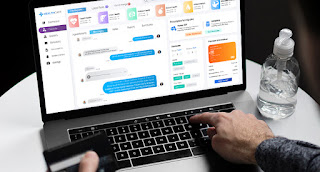Patient Engagement Solutions: It's Not as Difficult as You Think
One-third of patients assume they have little control over their health. It causes patients to lose motivation since they don't know what to do next and prefer to concentrate on other life elements. This exemplifies the healthcare system's failure to engage individuals in their medical treatment.
Patient Engagement in healthcare is the duty of the patient, the patient's family, and the physicians responsible for ensuring timely information about symptoms, disease, and therapy for a specific illness.
To enhance nurse engagement and patient outcomes at lower costs, health care institutions in the United States must engage patients to tackle the following issues:
Patient Communication:
One of the drawbacks of the US healthcare system is that individuals do not have enough time to talk with their doctors.
However, a new study has revealed that it is feasible to boost the effectiveness of patient-provider interaction by up to 40%.
Kudos to Patient Engagement Solutions enhances patient-provider connection via channels such as telemedicine, chat boxes, and in-app messaging.
Patient engagement programs can help doctors and patients communicate more effectively, allowing health professionals to deliver better treatment.
Data Security:
Sharing patient data across several health institutions increases the likelihood of security breaches, making data security a critical concern in the United States.
Thus, healthcare organizations use Patient Engagement Solutions to secure the confidentiality, integrity, and availability of people's digitally protected health information by conforming to HIPAA Security compliances.
Patient Portals:
In the United States, patient engagement portal development allows patients to express issues about their test findings, continuing patient care, therapies, or prescription renewals. Healthcare practitioners can post answers to the queries.
Patients can use this patient engagement portal to view or cancel scheduled appointments, communicate with their clinician directly, examine health center visit history, and access medical records.
Billing Process:
Medical billing may be a time-consuming procedure in the US health business. Bill payment alternatives are many for patients. Through the health engagement paradigm, patient engagement solutions simplify the billing and payment system.
Medical coding concerns may be resolved, and errors can be minimized using patient engagement in healthcare
Interoperability:
Data and insights gleaned from digital health platforms assist health practitioners in quickly locating data and streamlining operational operations through the implementation of EHR with health informatics.
Patient engagement systems provide real-time data analytics as well as data transmission across numerous health institutions.
Conclusion:
Patient Engagement Solutions increase the overall performance of hospital networks in the United States.
Making these portals available to patients is a phenomenal initiating step but meaningful patient engagement requires more interaction between patients and clinicians.
More significant intervention to encourage individuals for patient education is one of the core strategies for patient engagement.
Hence in this approach, patient engagement clinical trials actively involve patients in the processes of gathering information and making choices regarding their symptoms, diseases, and treatment choices.

Comments
Post a Comment